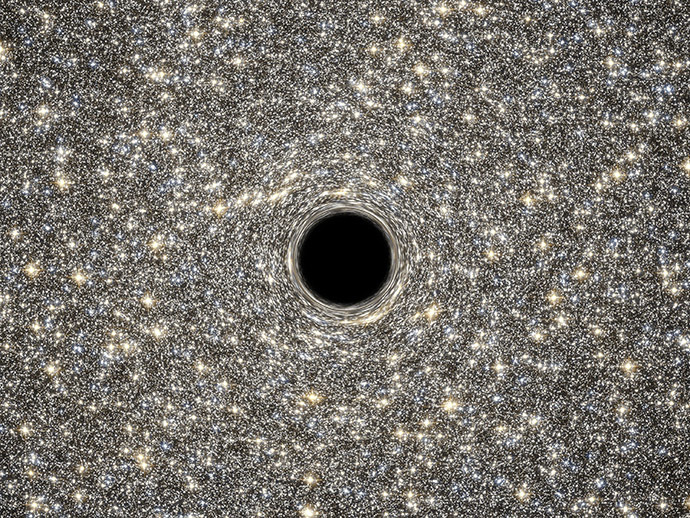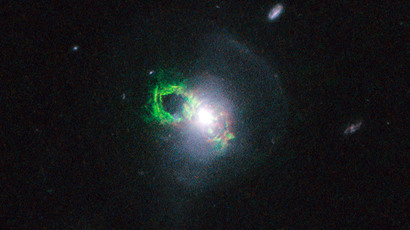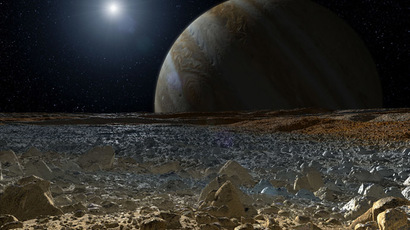Hubble Telescope turns 25: Amazing moments of a technical wonder
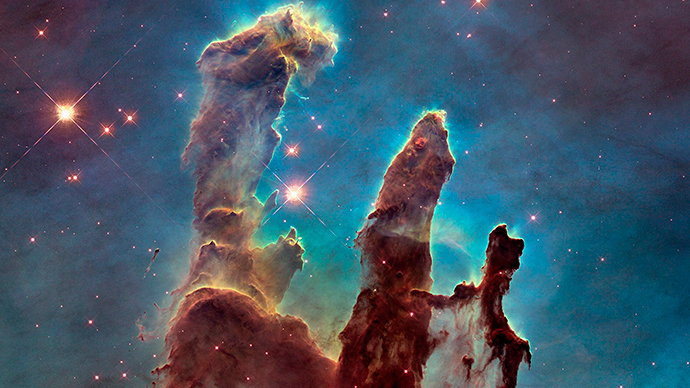
A quarter of a century may be a short term for mankind, but the Hubble Telescope has managed to offer a plethora of amazing findings over this time, measuring our ever-expanding universe and furthering human knowledge of deep space.
Launched on April 24, 1990, by the space shuttle Discovery, Hubble Telescope was named for astronomer Edwin Hubble, who confirmed an"expanding" universe, offering a foundation for the Big Bang theory. The Hubble Telescope is 43.5 feet (13.3 m) long, 24,000 lbs. (10,886 kg) by weight, and 14 feet (4.2 m) in diameter. Hubble has traveled a total 3 billion miles (at at 17,000 mph) along a low Earth orbit, at around 340 miles in altitude, according to NASA.
“Hubble has the pointing accuracy of .007 arc seconds, which is like being able to shine a laser beam on a dime 200 miles away,” NASA wrote.
Here are some of the top discoveries of Hubble, which was serviced for a fifth and final time in 2009.
The universe: 13.75 billion years old
One of the main objectives for Hubble was to calculate a precise age of the universe. By studying the brightness of pulsating stars -- known as Cepheid variable stars -- in distant galaxies, astronomers are able to determine their distance. Prior to Hubble, astronomers believed the universe was 10 to 20 billion years old. Specific observation of 31 Cepheid variable stars across various galaxies helped astronomers pin down the universe’s age by about 5 percent. Using Hubble, astronomers concluded that the universe is about 13.75 billion years old.
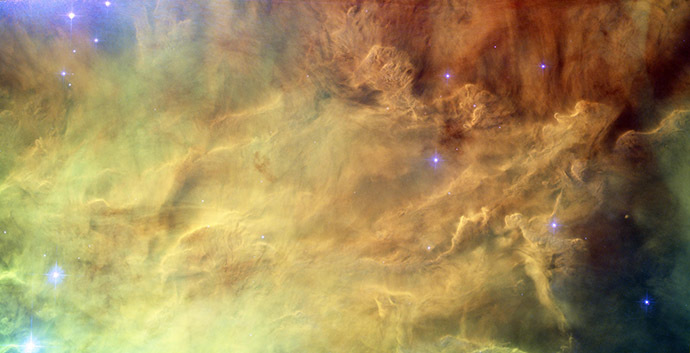
Dark Energy vs. Gravity
For billions of years, dark energy, discovered through bursts of light from bursting stars deep in space, has worked against gravity’s pull of the universe in a kind of cosmic tug of war. Dark energy forces galaxies away from each other, causing the universe to expand at an accelerated pace. Through use of Hubble, astronomers found that, about 5 billion years ago, dark energy gained the upperhand against gravity. Yet despite these advances in knowledge of dark energy, the pervasive universal force is still largely unknown by researchers.
Ultra Deep Field
Hubble's images of galaxies deep into the universe expand knowledge of how galaxies evolve, and how smaller galaxies have a history of colliding and merging into larger galaxies seen today. In 2004, the Hubble Ultra Deep Field captured preciseexposures of the first galaxies to materialize not long after the Big Bang. About 10,000 galaxies are encompassed in the image. "Searching for the faintest objects in the Ultra Deep Field is like trying to find a firefly on the Moon," NASA wrote at the time.
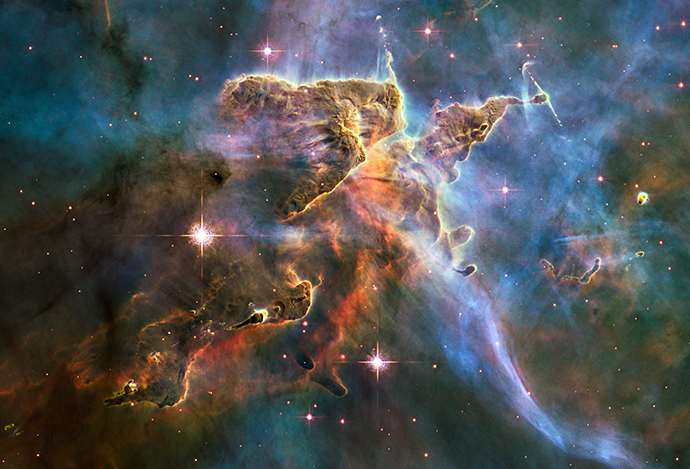
Supermassive black holes
Hubble found that supermassive black holes exist at the center of nearly all large galaxies. “Giant black holes are compact ‘monsters’ weighing millions to billions the mass of our Sun,” NASA wrote. “Their gravity is so strong that they gobble up any material that ventures near them.”
The supermassive black holes cannot be observed, but astronomers can use Hubble to measure velocity of matter traveling around them. Hubble was used to determine that a black hole’s mass depends on the weight of its galaxy’s core of stars. The larger the cluster of stars, the bigger the black hole. Astronomers believe black holes evolve with their home galaxy, consuming gas and stars present at the center of their galaxy.
Extrasolar planets
Hubble observations have led to the discovery that the Milky Way likely contains billions of planets. “Thus far, Hubble has made the first measurements of the composition of planets around other stars, finding atmospheres containing sodium, carbon and oxygen, and a planet with a comet-like tail of hydrogen evaporating into space,” according to NASA. “It also found the first organic molecule on an extrasolar planet: methane in the atmosphere of a Jupiter-sized planet blisteringly close to its star.”
The first visible-light photo of an extrasolar planet was taken by Hubble. Planet Fomalhaut b, “a world approximately three times the size of Jupiter and possibly surrounded by a bright disk of gas and dust,” was observed orbiting the southern star Fomalhaut, which is located 25 light-years away in the constellation Piscis Australis.
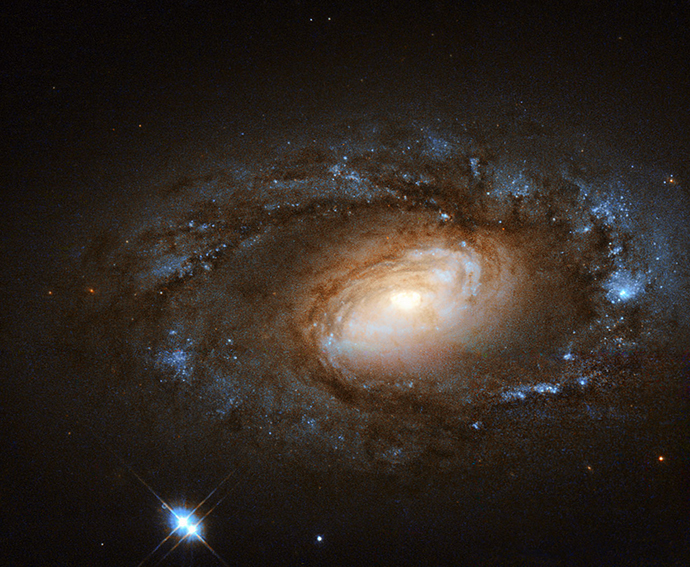
'Pillars of Creation'
In 1995, Hubble captured a photo of the Eagle Nebula, located about 6,500 light years from Earth. Dubbed the ‘Pillars of Creation,’ the nebula's three-light-year-tall column of cold gas and dust can be seen thanks to ultraviolet light from the nascent stars nearby.
“The pillar is also being pushed apart from within, as infant stars buried inside it fire off jets of gas that can be seen streaming from towering peaks like arrows sailing through the air,” NASA wrote of what has become an iconic image symbolizing Hubble’s transformative capabilities.
